Walther Arms seems to have hit a lick with striker-fired 9mm pistols after a short-lived start or two on now-discontinued models. Their Performance Duty Pistol (PDP) series is a growing collection of high-quality, shootable guns that are gaining attention from competition, defensive, and law enforcement shooters. I’ve owned an early model of the PDP, and recently have had the opportunity to try out a couple of newer stablemates, specifically the Match and Pro versions.
Modularity is the word with the Walther PDP. Three slide/barrel lengths and two mag capacities, 15 and 18, are offered, and they’re all interchangeable. Walther is not yet selling components separately, though.
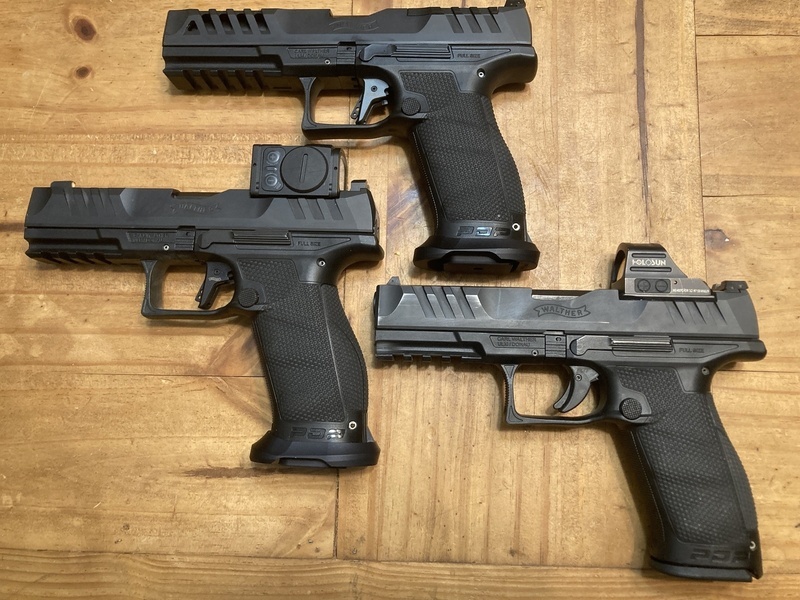
So far, the PDP is only offered in 9mm Luger. As time passes, I’m sure fans of other cartridges might be able to buy a PDP of their own, perhaps in .40 S&W or .45 ACP. While these guns handle well, the square profile of the slide gives them a big look.
User-Friendly Features
These guns use the best of modern understanding of pistol ergonomics. They feature three choices of backstrap, an ambi slide lock that’s easy for most thumbs to reach, and a mag release, which can be moved for left-thumb operation.
Walther chose a highly textured, almost silicon-feeling grip texture that works in any weather. Unlike any other I’ve seen, it has tiny pyramid-shaped bumps to ensure a secure grip. I’ve fired the Match version of the PDP with gloved hands and soon forgot about the gloves.
“Superterrain serrations” is the name Walther gives to the PDP’s dramatically deep slide serrations. On the Match pistol, serrations in the front give way to lightening cuts on the five-inch slide. While I find the Match version to be front-heavy for my medium hands, the ports do tame recoil a bit, or a person can go all out and get the steel frame Match pistol that’s sure to be a flat shooter for competitive pursuits.
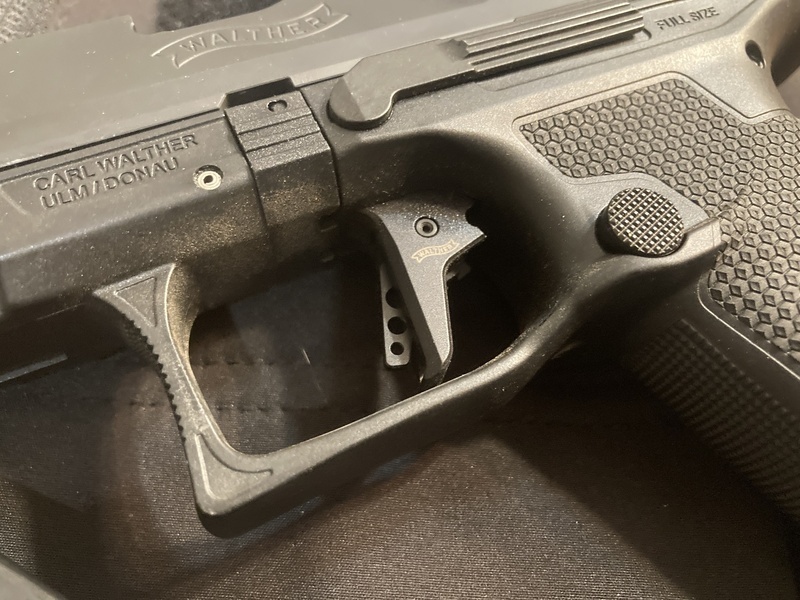
Optics-Ready from the Factory
As expected today, each PDP comes optic-ready. The Pro version, not yet available to the general public but for sale to agencies, has a direct-mounted Aimpoint ACRO. Others feature a cover plate that looks great as is, but it can easily be swapped for one free plate from the Walther factory. A few plate patterns are offered to accommodate the most popular optics. I’ve had nothing but success with my own PDP’s mounting system, so much so that it’s reservedly restored my optimism that a plate interface can make a solid mount.
It takes installing a red dot optic to enjoy one great feature of these guns: the grip design. With a simple backstrap change, the angle is comfortable and should be pleasing to most shooters. But PDPs take it a step further. The shape encourages a strong grip by the firing hand pinky, which serves to “drop” the optic’s dot into the shooter’s line of sight as the pistol is presented on target. It’s a brilliant design.
Operating the PDP
The PDPs I’ve tried have 5- and 4.5-inch barrels. The five-inch Match has lightening cuts on the sides, wrapping a little around the top of the slide. All have triggers that break at around five pounds, with absolute smoothness and a short, palpable, but nearly silent reset. All have the passive safety block we’re accustomed to with striker guns. The Match and Pro feature a flat-face trigger with a safety block. Although there’s an obvious difference in the appearance of the curved trigger on the base model and the others, I find their operation to be very consistent. It’s easy to transition from one to the other.
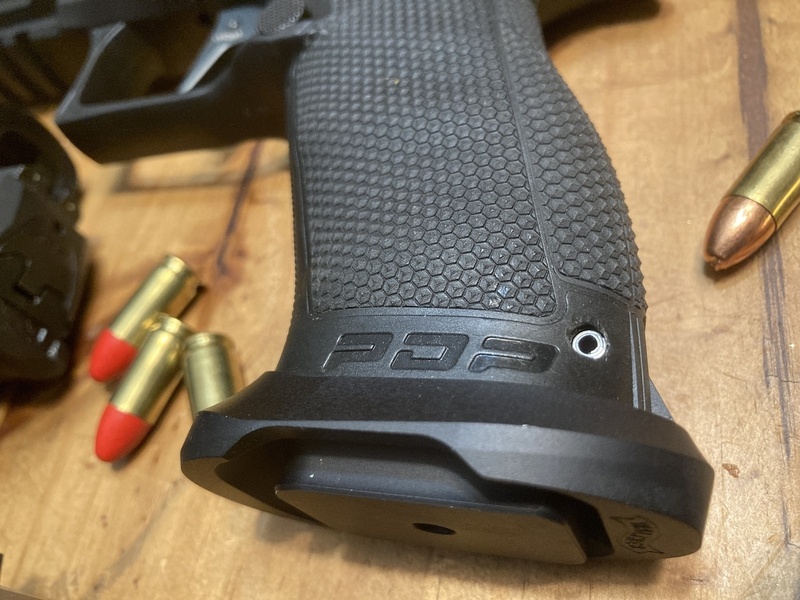
Accuracy is in the Bag with Great Sights
I have found PDPs to be consistent and as accurate as any of the many striker guns I’ve used, regardless of whether I’m using an electronic optic or standard irons. Even using low-grade brass-cased FMJ ammo, I can consistently deliver five- to six-inch groups at 25 yards with the Pro and base models. As for the iron sights, the three-dot system is adjustable for height and windage using the rear sight, giving the user every advantage with a little investment of time and ammo.
Out of the box, the iron sights were right where they should be, at least for me. I was pleasantly surprised to make a 50-yard hit on an A-zone-sized plate as the first shot fired from the PDP Match. The dots on the Match and standard models are non-tritium, and the front sight isn’t oversized. The Pro model has tritium front and rear sights, something I appreciate when using the gun in dim light or total darkness. While the ACRO’s clarity is excellent, there’s no escaping that it’s easier to use tritium at night than a red dot. And the low-mounted sight co-witnesses nicely with the irons.
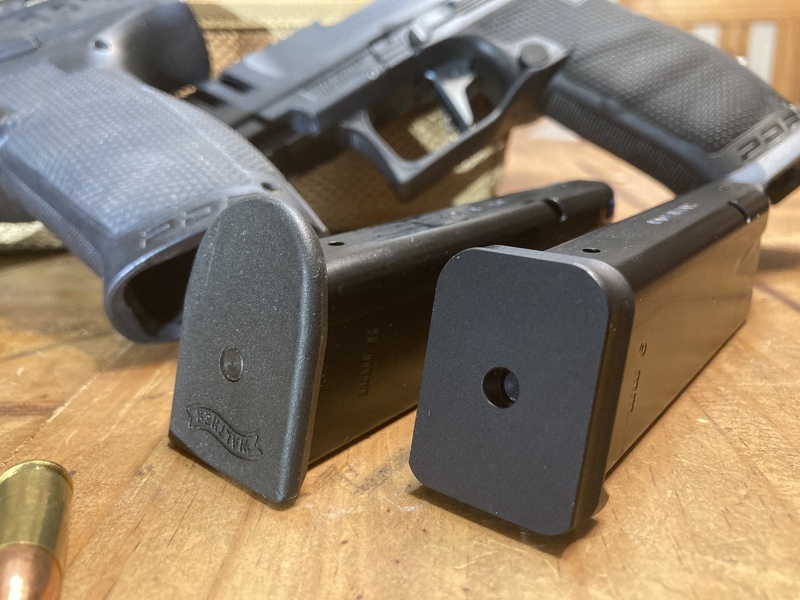
This One’s a Keeper
The great thing about the PDP series is there’s a gun for every purpose. While I haven’t mentioned the concealed carry F version (I’ve not tested it), an industry friend who’s a concealed carrier and competitive shooter says he thinks it’s the best on the market for concealment. And I’ve not mentioned that the Match model even has a steel frame variant. With three choices of length and two choices of mag capacity, a ported slide or not, and a mag well flare or not, PDPs are difficult to categorize, but they’re easily customized.
A Few Drawbacks
No product is without detractions. The most common criticism of the PDP is its boxy appearance. And yes, it’ll probably appeal more to those who prefer a big-looking gun. But I have found it to be easy to handle in every way, save for the effort of clearing the top of the holster with the five-inch Match. Though it makes no difference in function, I was initially unsettled to realize the end of the guide rod isn’t visible on the front of the gun on the shortest-barrel models. But anyone looking much at the front end of the gun shouldn’t be doing that for long anyway.
My only real disappointment is the rolled aluminum pin that must be removed to change the backstrap. It wallowed out some when pressured with a pointy range-expedient/improvised tool. Some will say that’s my fault, and in a way it is, but not many people carry a punch set around, and there’s no tool included with the package. The pin remains usable, but this is a place where I think polymer would make more sense.
For those seeking a duty holster, Dara Holsters has a US-made Level 2 holster I’ve used with the Pro model that works really well, has low top clearance, and is priced well under $200. I was able to find a competition holster from a foreign company maker that has served me well. While mag pouch choices are still limited, I’ve made the happy discovery that my Canik TP9 mag carrier is fit for duty wear with the PDP.
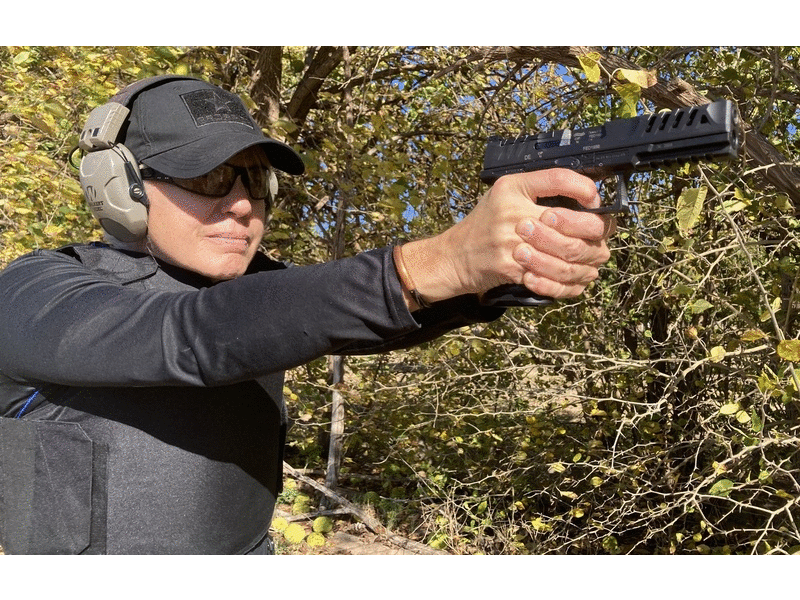
Parting Shots
With a floor of around $650 on market price, rising to over $1,000 depending on features, prices of PDPs vary widely. Keep in mind that the inclusion of three magazines adds value to the package. The Walther brand also tends to hold value well, in case you need another reason to make your next handgun a PDP.
Pick up a PDP, and you won’t be disappointed. It’s worth the investment!


